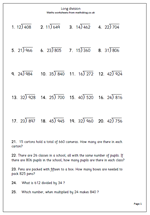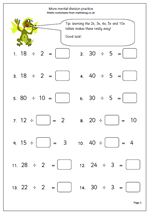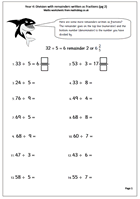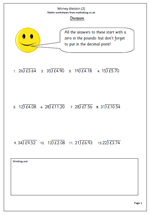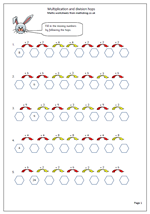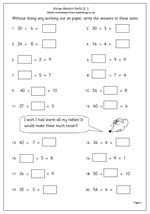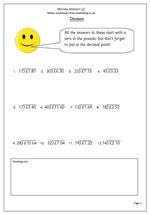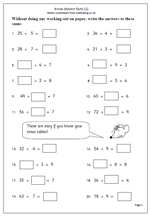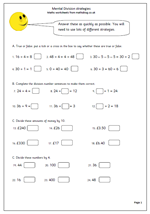 Having a browse round the site there seemed to be some areas which are a little short of pages; one of these being the year 4 division pages. So, here is a Year 4 division worksheet which looks at some of the strategies children need to be confident with in order to carry out quick, efficient division calculations.
Having a browse round the site there seemed to be some areas which are a little short of pages; one of these being the year 4 division pages. So, here is a Year 4 division worksheet which looks at some of the strategies children need to be confident with in order to carry out quick, efficient division calculations.
The worksheet is divided into 4 sections, each with a different purpose. The first set of questions looks at basic concepts, such as dividing by 1 and the fact that, unlike addition the calculation has to be carried out in the order stated e.g. 34 divided by 2 is not the same as 2 divided by 34.
The second set of questions takes a quick look at division facts. Many teachers are now of the opinion that division facts should be learned, just like multiplication facts (tables.) This can be argued with in that if a child knows all the times tables they can quickly use them to work out division problems.
The third set looks at dividing money by 10. Of course this is easily done by moving each digit one place to the right. As it is money there should be 2 digits after the decimal point. e.g. £32 divided by 10 should be £3.20. Watch out for those children who get confused because they have been told to ‘add a nought’ when multiplying by 10. Never a good idea!
The last set is all about dividing by 4. Often this can be done by halving and then halving again.
